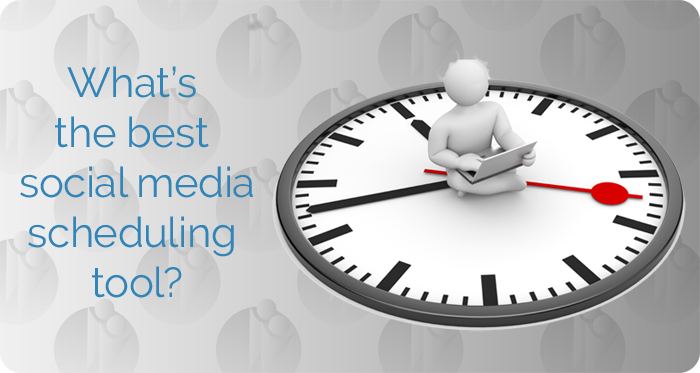How a CRM Can Help You Onboard Clients
This page may contain links to Amazon.com or other sites from which I may receive commission on purchases you make after clicking on such links. Read my full Disclosure Policy

It’s been over 20 years since I transitioned from my regular job to my own business. One of the things I really missed was the CRM software that allowed us to keep lots of information about our clients at our fingertips. It made it so easy, not only to keep track of our many clients, but to search on any term when we wanted to find everyone who might be interested in something specific.
At the time, I couldn’t find software that met both my needs and my budget, but I managed to get by fully utilizing the fields in my contacts. Nowadays, there more affordable apps and services available, and I’m pleased to welcome Amber Barrett, Systems & Workflow Strategist, who’s here to explain several ways you can take advantage of a CRM system in your business.

Picture this: you’re busy sorting, arranging, and transforming spaces, all while juggling clients and their unique needs. Not to mention your inbox is quickly growing with unread emails, and your task list is about a mile long. Sounds like a whirlwind, right? But what if I told you there’s a secret weapon that could make your life and business a whole lot easier? Cue the music for Customer Relationship Management (CRM) systems!
Now, don’t let the fancy term scare you off – in this blog post, we will talk about what exactly a CRM is and why it’s like having a virtual BFF for your organizing business. We’ll dive into all of the incredible perks it brings, plus share how a CRM can help you manage leads, book more clients, and turn those clients into repeat customers that continue hiring you again and again. So, if you’re ready to sprinkle some tech-savvy magic into your organizing life, stick around – this one’s for you!
What is a CRM?
A Customer Relationship Management (CRM) system is a software tool that helps businesses manage and analyze customer interactions and data. It uses automation to streamline repetitive tasks, such as sending automated emails, scheduling appointments, and updating client information.
Imagine you have a little book where you write down all the important information about your friends and family, like their names, phone numbers, and what they like. This book helps you remember all the details about them so that you can be a better friend. A CRM system is like a super high-tech version of that book but for your business. Instead of just keeping track of friends and family, it helps businesses keep track of all their customers and interactions with them.
What are the Benefits of Using a CRM?
Three key benefits of implementing a CRM into your business include time savings, money savings, and keeping you organized.
- Time Savings – By automating repetitive tasks like tracking leads, sending payment reminders, and scheduling consultations a CRM saves a significant amount of time.
- Money Savings – A CRM consolidates various functions into a single platform, eliminating the need for multiple tools and applications. This allows you to cut down on software subscriptions and save money!
- Centralized Storage – A CRM keeps all customer data, documents, and communication in one place. This makes it easy to access everything you need and stay organized.
How a CRM Can Help You Manage New Inquiries
There is nothing worse than missing out on a potential customer because you missed their email or phone call and weren’t able to get back to them soon enough. There is a saying, “The early bird gets the worm”… or as I like to say, “The early bird gets the client”. The faster you can connect with someone that expresses interest in working with you, the higher chance you have of booking them as a client. Now, we can’t be glued to our computer or phone every second of every day, which is why using a CRM is so important.
With the help of a CRM, you can easily create a customized lead capture form that can be embedded on your website or shared on your social media channels. When someone fills out the form, their information is automatically stored in the system as a new inquiry and a workflow can send them an immediate response. This response could let them know you did in fact get their inquiry and will contact them soon. Alternatively, with the use of the CRMs scheduler, you could also include a scheduler link right inside the email so that the potential client can schedule their consultation directly. This eliminates the need to go back and forth 10 times by email to pick a date and time that works well for both of you.
Bonus: CRMs allow for automated follow-ups. That means if you don’t hear back from a lead, or they don’t schedule their consultation, the workflow will automatically reach back out to them so you stay top of mind, and have a better chance of converting them to a paying client.
How a CRM Can Help You Book Clients
Don’t make people jump through hoops to hire you – if you don’t make the process of booking your services easy, then you can’t expect your leads to turn into clients. Let’s see if this sounds familiar to you:
- You send an email to your lead giving them an estimate for their project.
- You wait for the lead to respond and give you the yes or no.
- If they are ready to move forward with hiring you, then you send them a contract.
- Your lead then prints the contract, signs it, and then has to scan it back to you.
- Once you receive that signed contract, you send them yet another email with an invoice.
This is too many steps and is asking too much of your potential clients. People hire professional organizers to make their lives easier and less stressful. If you have to send more than one email to get your lead booked with you, you are making things too difficult and cutting your chances of booking that person as a client.
With a CRM, you can combine the above process into one single email that contains a three-in-one document allowing your leads to accept the estimate/proposal, sign the contract, and pay their invoice. This also allows you to easily create payment plans so your clients can make payments for your services, or pay a percentage up front to claim their spot on your calendar.
Just like how a CRM can follow up with potential clients, it can also follow up with leads you have sent proposals, contracts, and invoices to, and remind them that they have steps to complete or payments to make. This means less on your to-do list, and no more administrative work falling through the cracks.
How a CRM Can Help You Onboard Clients
Onboarding refers to the process of welcoming and integrating a new client into your service. This crucial stage is designed to help clients get started smoothly, understand the services they will receive, and what the next steps will be. It’s normal to get caught up in “booking” a client, but don’t stop “romancing” your client once they give you their money. Welcome them to working with you, and share your excitement.
Not only does this reinforce that the client made the right decision in hiring you, but it also provides the client with a high-quality user experience.
To do this, you can easily create a workflow inside your CRM to send your brand new client an email as soon as they make a payment on their invoice. This email can include access to their very own client portal and a scheduler for them to pick the best date for their project day. Here is an example of a welcome email:
Hi (client name),
It’s official! Welcome to the (your business name) family! We are so thrilled to be working with you! This email confirms that we have received your signed contract and deposit.
Here’s what happens next:
Access Your Client Portal
The client portal is where you’ll find your contract, invoice, and any emails we send you all in one place! You can use the details below to log in. Be sure to bookmark the link so you can find it easily in the future.
Portal Link:
Password:
Your Project Date
In the next few days, you will receive an email to schedule your project date. If there are any specific dates in the coming weeks that are best for you, please let us know.
We are so thrilled to get your project started and will be in touch soon!
How A CRM Can Help You Make More Sales Once A Project Is Complete
It’s always easier to sell to past clients than to have to go out and find brand-new ones. Past clients already know what it’s like working with you, they trust you and know the results you can create in their spaces. Using a CRM, you can create a workflow that can nurture your client even after their project is complete. Imagine this, you send off the final invoice and as soon as the client pays they automatically receive a thank you email with a link to leave a testimonial. One month later another automated email goes out checking in to see how they are doing, and if the systems you implemented are working well. From there, a month or two more go by and the workflow sends another email, but this time it shares your maintenance packages so that the client can re-hire you to perform routine maintenance on their space. And the best part is that those past clients can pay and schedule their maintenance session right from that email.
Using a CRM to offboard your clients not only allows you to never forget to ask for a testimonial again, but it easily allows you to stay in touch with your clients and offer your help again and again. Without the use of a CRM, you are stuck manually writing the emails and having to remember to send them out once a project is complete. You have better things to do with your time!
Now, you might be thinking all of this sounds great, but you don’t want to sound like a robot. Automation and workflows can really sound intimidating and impersonal, but the truth is, your CRM allows you to infuse your personality and brand voice into every single email, form, and touch point. At no time, will your clients feel like a robot is talking to them!
How to Get Started with a CRM in Your Organizing Business
There are a lot of CRMs out there, but the two I most recommend are Dubsado and HoneyBook. Both of these CRMs have amazing features that allow you to run your business with less time, without compromising on an amazing client experience. If you aren’t sure which one would be the best fit for your business, I recommend taking this CRM Quiz.
Once you’ve chosen your designated CRM, you can begin to set it up for your unique business needs. I recommend these steps:
- Map Out Your Process – Before you dive into setting up your CRM, you need to get clear on your client process. What are the steps your clients go through from start to finish?
- Create Your Content – Once you know the process, it’s time to create the content. Things like emails, proposals, and questionnaires.
- Setup the Tech – This is where everything comes together. Now that you know the steps in your client process and you have created the content to execute it, you can create your workflows and set up your CRM.
If you need more help setting up your CRM or defining your client process I invite you to learn more about how I can help here.




Great CRM information. When I adopted my CRM I needed help laying out our sales and client retention process and as well implementing the system. I think it is worth every penny to work with an expert from the beginning.
Thanks for sharing your experience! People often don’t want to invest time or money into setting things like this up, but it will definitely pay for itself in time.
I think a CRM is very helpful, especially if you have a business with multiple employees. I have a very simple business model, and haven’t yet the felt the need. I sort of set up my own system before I even heard of CRMs, back when I was starting my business. If I were starting a business now, I would probably go for one of these. The prices are much better than they used to be, and it would be streamlined. Nice to read about CRMs in detail I here. This topic comes up on the NAPO POINT quite a bit!
I tried one in the early days of my business, but ran into technical issues and the company wouldn’t help me until I paid (I was still on a free trial). I decided just to drop it.
Like Seana, I can see how useful a CRM would be for automating a large business, either one with lots of employees or numerous prospects all at once. Every CRM I’ve seen feels overly complicated for my business, but I’m intrigued to take the quiz and see how Dubsado or Honeybook might work for me. After 21 years, I still remember just about every client detail, and figure that when I no longer can, it’s probably time to hang up my labelmaker. 😉 But I am always eager to learn more about CRMs to see what might be useful for my clients who have far more complex businesses.
Automation seems like a double-edged sword. I don’t mind if my mechanic or a non-personalized service uses automated emails with information, but if someone who provides a personalized service (organizer, coach, therapist, etc.), I think it would turn me off. I reply to each client’s emails personally, with my own sense of humor, picking up on their word usage and tone to be on alert for taking their emotional temperature. I use a basic template, but I never send an email that isn’t highly personalized. A CRM can automate the task, but not the humanity. Again, if I had a big company, or perhaps if I had a different kind of client base that wasn’t looking for the human touch, I might be much more inclined toward using CRMs, but can see how they could work for my clients needing that kind of business support. Amber, thanks for the detailed explanations!
Thank you for pointing out the potential pitfalls – it’s always important to consider those as well as the benefits!
I love this detailed explanation of CRM. While I don’t use one, I have developed systems that work. Could they improve? Always. However, I’m with Julie about the value of customizing communication for each client. As she said, organizing is a ‘personalized service.’ However, I also get how useful automating or having all the info in one place can be.
When I changed my business to working virtually only, I had to revamp how many of my onboarding and service flows went. It was an excellent opportunity to refine the flow. And I continue to do so.
I have lots of email templates, but I don’t think I would want them to go out without having the opportunity to tweak the content to suit the client and situation. I don’t know for sure, but I imagine that’s an option, and it could still save a lot of time.